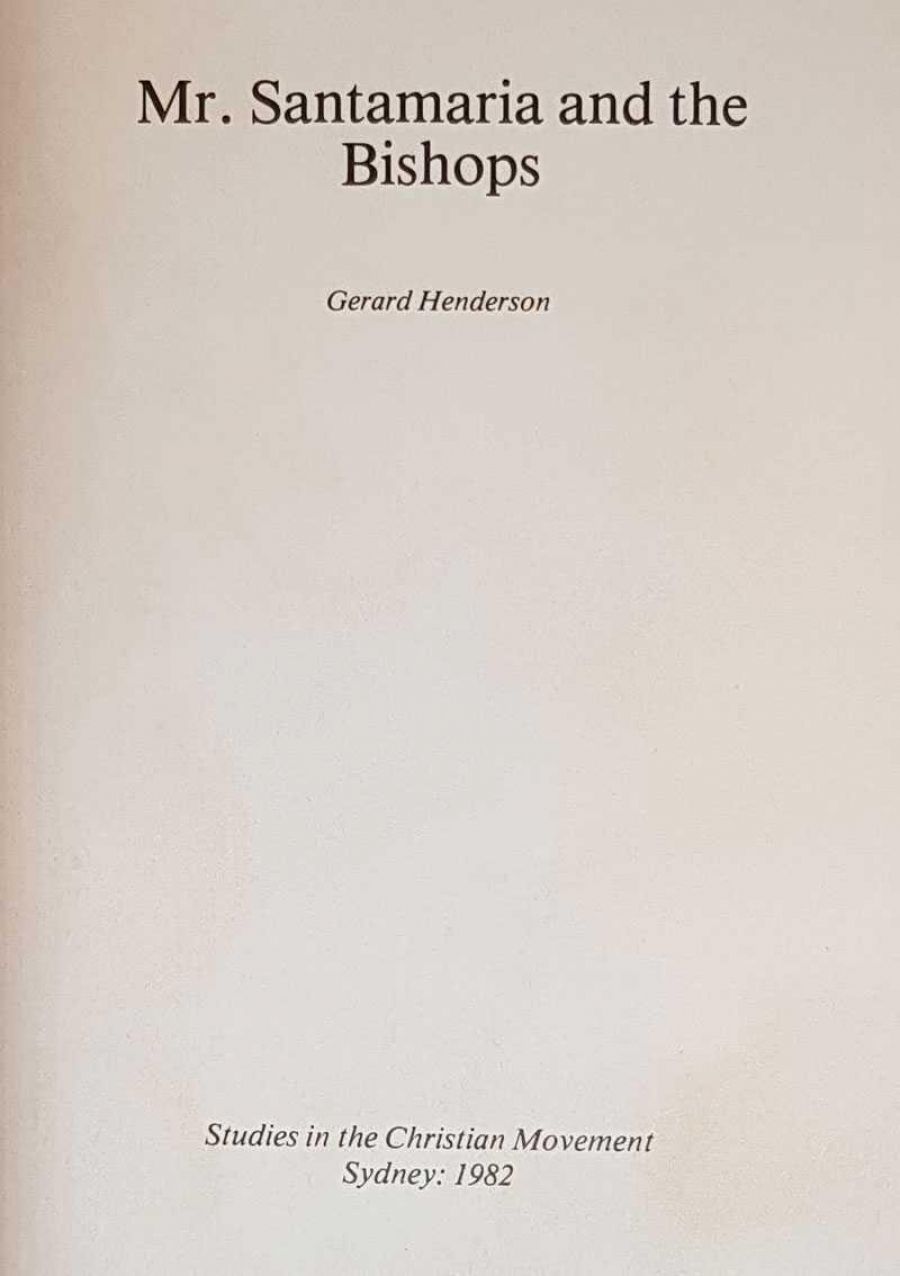
- Free Article: No
- Contents Category: Religion
- Review Article: Yes
- Online Only: No
- Custom Highlight Text:
Gerard Henderson takes as the subject of this important book the relations between the bishops of the Catholic Church and its lay organisation, the Catholic Social Studies Movement during the period from 1940 to the 1960s. The study is particularly welcome as neither Church nor Movement were given to public self-exposure. Henderson, by using the files of the National Civic Council and the minutes of relevant episcopal committees, has given us an insight into the conflicts within the church over its role in political activity in this period
- Book 1 Title: Mr Santamaria and the Bishops
- Book 1 Subtitle: Studies in the Christian movement
- Book 1 Biblio: St. Patrick’s College, 230 p., $19.95
Henderson does not think much of Santamaria’s visions for Australia. In an analysis of the ideas which emanated from the CSSM and the statements on social justice which the bishops signed but Santamaria drafted, he exposes their lack of realism and their authoritarianism. A society of small farms, industrial guilds, and big families being educated in ‘Christian’ principles in which the state worked to secure ‘harmony’ did not have much appeal then, nor does it now. Though Santamaria’s interests in corporatism subsided in the late forties, Henderson writes of him that he remained addicted to crises and to ‘ideological’ resolutions of social problems – not only about Communism but about matters such as population trends and the future of agriculture.
Until 1954, the hierarchy of the church was happy enough with the activities of the Movement and with the church’s own more public profile. However, as the struggle against Communist influence in the ALP spilled into a public controversy and as the party split, the bishops of Sydney and some other dioceses attempted to impose a control that they had not previously exercised over the Movement. Their disagreements with Santamaria and his patron Dr Mannix were not over the need to fight communism or about the need for the church to stay out of politics. Rather, the Gilroy-Carroll forces felt that the church could achieve its ends through the back door and softly, softly. The Mannix-Santamaria approach was too direct, too crude, and too likely to result in a revival of antiCatholic sentiment in a period in which Catholics had achieved integration within the Australian community. Henderson traces this extensive and secret debate, which came to involve several Vatican pronunciamentos and much reference to ecclesiastical authority. At root, he declares, the matter was about tactics. The Sydney bishops had enjoyed considerable political influence in NSW Labor and had more confidence in the dominant elites than had the political ‘outsiders’ in the Melbourne church.
The Sydney view triumphed within the hierarchy, leaving the CSSM ‘effectively crippled’ as an organisation within the church. Henderson traces the subsequent history of the Hierarchy’s attitudes towards the ALP, the DLP and the National Civic Council – a history marked by a repetition of the positions taken in the 1954–56 debate with Mannix declaring his interests and with others, including Mannix’s successor Simonds, declaring that the church knew nought of politics.
Henderson is at pains to point out that the church has always been involved in politics and always will be. ‘An organization which makes no distinction between public and private morality cannot do otherwise.’ Nor does he ‘disapprove of this reality. His point is that the church should accept both the compromises and the benefits of living in ‘pluralist society’. It is on this score that he reserves his most serious criticism for Santamaria, though noting that Santamaria has become more adjusted to the virtues of pluralist democracy in recent years. Henderson also argues that Santamaria did the anti-Communist cause a disservice. By making anti-communism a cause associated with murky doings within the Catholic Church, Santamaria ‘unwittingly assisted in the deauthorising of intelligent opposition to communism – both within and outside the labour movement’. Thus, when Santamaria bemoans the fact that Australians don’t take the communist issue seriously enough, he has only himself to blame. It will be interesting to see how Mr Santamaria responds to this, the cruellest charge of all.


Comments powered by CComment